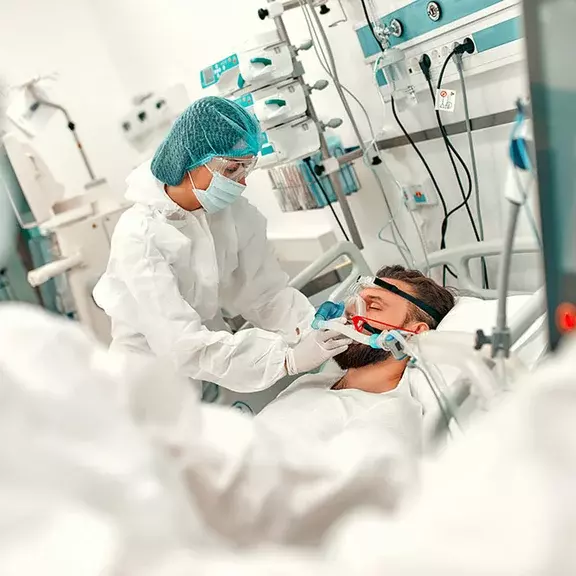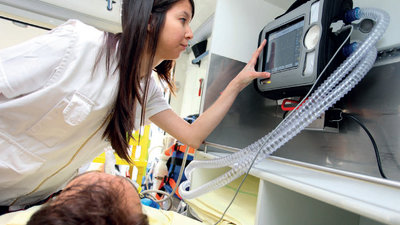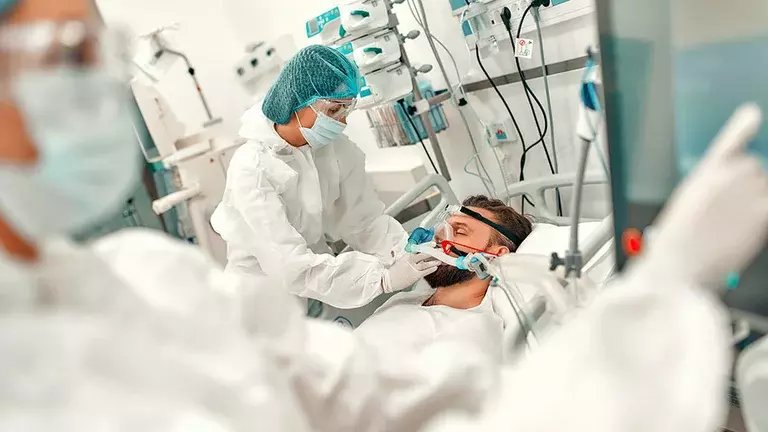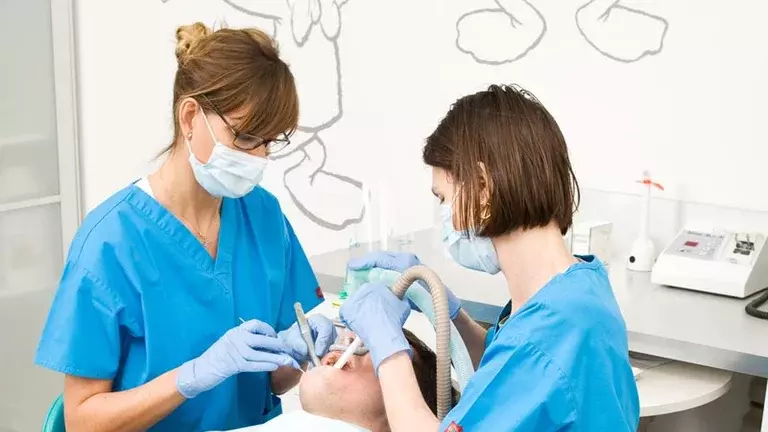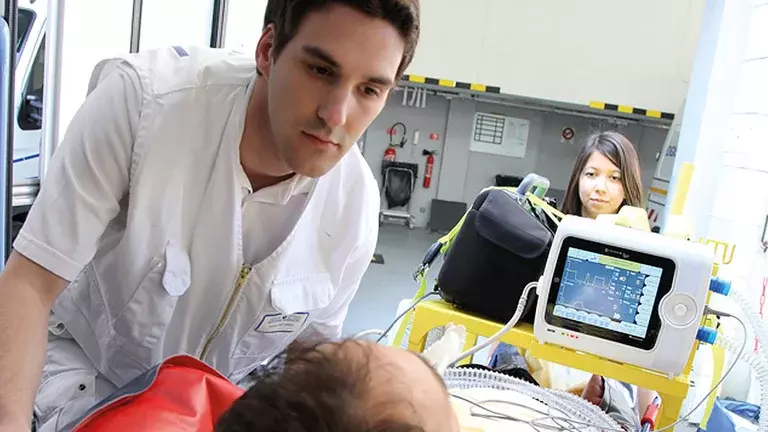Pulmonary hypertension
Pulmonary hypertension (PH) is characterized by an increase in blood pressure in the lungs. It can be acute or chronic.
Pulmonary hypertension (PH) is characterized by an increase in blood pressure in the lungs. It can be acute or chronic.
The acute form often occurs in hospitals in the intensive care unit or in the operating room. Apart from increased blood pressure in the lungs, it can be linked to the narrowing of the pulmonary vessel or heart problems. It is a life-threatening situation for the patient, and action must be taken immediately.
A proliferation of cells in the wall of the small pulmonary arteries causes chronic PH. This progressive remodeling leads to obstruction of the vessels, which increases vascular resistance in the lungs. It leads to heart and lung malfunctions, which can be fatal.
The importance of adequate treatment
A severe elevation of pulmonary arterial pressure induces a vicious circle that may lead to visceral failure, severe systemic dysfunction, and ultimately cardiogenic shock, which can be fatal.
Acute pulmonary arterial hypertension also increases risks during and after an operation.
Even though some cases of PAH are qualified as rare disorders, their occurrence is a serious concern for all healthcare organizations. Acute PAH is a true emergency and its fast and effective control is vital for patients.
What is the right treatment for APAH?
When acute pulmonary arterial hypertension (APAH) is monitored or observed in patients in an intensive care unit or operating theater, treatment must be quickly initiated. Luckily, acute pulmonary arterial hypertension is reversible. However, it requires an immediate reaction with resuscitation efforts and supportive measures aimed to improve and stabilize.
Treatment of PAH requires the following:
- Oxygenation
- Blood pressure management
With regards to these challenges and objectives, there are different ways with specific pulmonary vasodilator agents that are useful both to modulate pulmonary pressures and reduce heart workload, for example, inhaled nitric oxide.
Q&A
What is the priority: acute or chronic PAH?
Patients with acute pulmonary arterial hypertension are as important as chronic class IV patients, but the case is reversible.
For that reason, acute requires an immediate reaction with resuscitation efforts and supportive measures aimed to improve and first stabilize.
Can PAH be prevented?
Do you need pricing or more information?
Our team will listen to your needs and answer your questions, to help identify the right equipment and services for your facility.
Write us
Talk to us
Visit us
6990 Creditview Road, Unit 6
Mississauga, ON L5N 8R9
Why choose us
-
Full-scope medical gases provider
We are involved from production to patient therapy, and know medical gases intimately -
Reliability
You can depend on us to provide you with the right equipment and services to meet your facility's needs -
Innovation
Innovation is our vision: we prioritize quality of care through patient-centric products and services -
Safety
Ensuring the safety of your patients and staff is our top priority - our emphasis is on safety, compliance and risk management -
Experienced
We are owned by Air Liquide Group, the largest supplier of industrial, medical & specialty gases, found on every continent in the world -
Coast-to-coast service network
Our fill plants are widespread to shorten response-time and ensure supply chain reliability -
Accreditation and regulation
We help you ensure your facility's medical equipment is serviced and fully compliant with Canadian standards -
Customized portfolio
We supply a complete range of high-quality specialty gases, including mixtures used in specific applications to suit your needs
